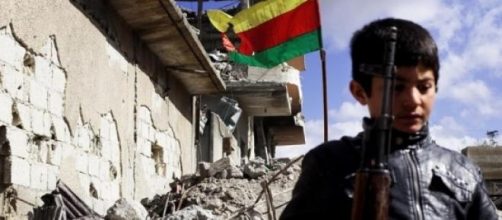In February 2015, a group of research students from LUISS University in Rome undertook a field research on the Syrian-Turkish border to investigate the role that the Kurdish identity plays in the Syrian conflict. The results of their investigation disclose that high levels of autocratic oppression rule the Rojava region, located in the north of Syria.
The democratic experiment of "Rojava" leads the international community to celebrate the Kurdish individual as the modern champion of freedom, ready to die in order to build and defend his land.
Conversely, this modern myth hides immense socio-political and cultural differences, which may undermine the union of different realities of the "Great Kurdistan".
When Dr. Danilo Catena and Dr. Francesco Piccat reached the Turkish-Syrian border, the mythologized image of the Kurdish liberation war vanished and was replaced by a transforming historical multifaceted event. On the ground, fighters of the Kurdish resistance movements - YPG or YPJ - appear not guided by a selfless and libertarian spirit, but rather forced to take up arms to defend an idea of "home" that is exclusively related to the autocratic Party Ocalan in power.
In addition to geographical and political division's factor, the supposed concept of Kurdish homeland also lacks of a cultural element: not all members of this ethnic group share the same language nor the same traditions, as these have been contaminated by ones related to different nation states.
The research project highlighted that the rhetoric of a large shared homeland is dictated by the historical contingent moment, which needs an identity by denial. The radical identification of a common enemy by the Kurdish PYD Party enabled the overcoming of specific differences and created the myth of one people united under the leadership of the Party.
The Kurdistan Workers Party found in the Syrian civil war the opportunity to rectify its policy in a more communitarian way and distant from its strictly Marxist-Leninist origin. In Meshmer, a village that lacks of basic necessities, was created a library of mud in which pictures of the Kurdish martyrs of the revolution are alternated to texts of Ocalan, Lenin and Marx.
In the context of international law, the Rojava's experiment constitutes an offense: the three cantons are not located in a "no man's land" but in the territory of a national state, although this is not famous for its respect for human rights.
The identity myth is based on a perfect and not perfectible construction of values because it relates to a golden age long gone, hence not objectionable by its very nature. Yet, the Kurdish myth does not refer to a glorious past, but is being created along with the revolution and it arises from refugee camps and villages. It follows that the values underlying the Kurdish mythopoeic are politicised and they do not encompass the whole of society, as they do not relate to a happy common past.
The rhetoric built around the Kurdish is likely to be dangerous and to break the values that this people declared to fight for, since it elevates the Kurds to the status of heroic freedom fighters, supposedly superior to other peoples living in the Rojava region.
The communal model of Rojava may represent a new and efficient proposal for the Middle East where the nation-state has shown its limits; to make this possible, the Kurds ought not to fall into the seduction of their own myth but to be faithful to their new Constitution.

